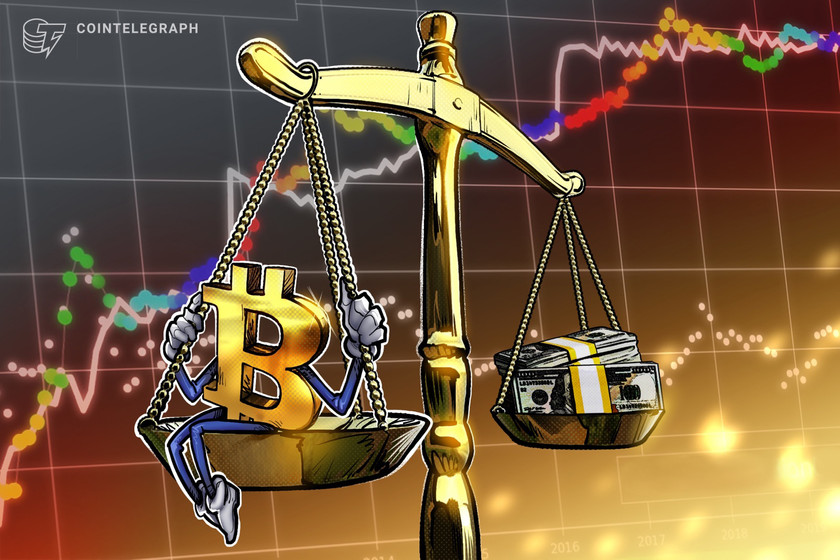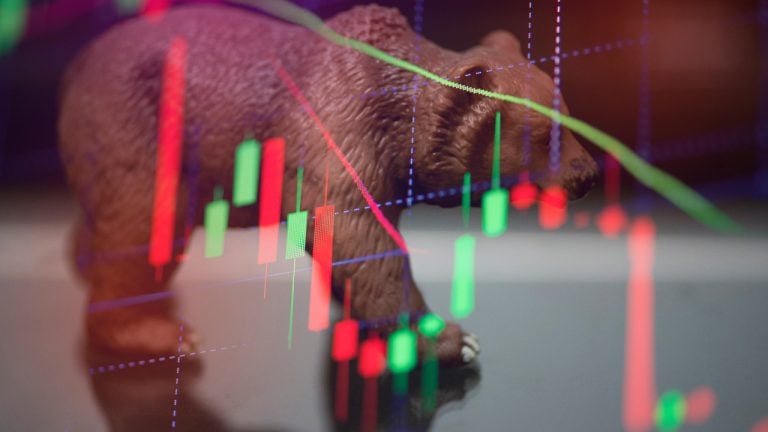
Bitcoin price gave up its recent gains as concerning signals from the US economy continue to weigh on investor sentiment.
Bitcoin (BTC) price gained 6% from Oct. 1 to Oct. 2 but after failing to break the $28,500 resistance, the price dropped by 4.5% on the same day. This decline happened because of the disappointing performance of Ether (ETH) futures exchange-traded funds (ETFs) that were launched on Oct. 2 and concerns about an upcoming economic downturn.

This correction in Bitcoin's price on Oct. 3 marks 47 days since Bitcoin last closed above $28,000 and has led to the liquidation of $22 million worth of long leverage futures contracts. But before discussing the events affecting Bitcoin and the cryptocurrency market, let's attempt to understand how the traditional finance industry has affected investor confidence.
The overheated US economy could lead to more Fed action
Investors have heightened their expectations of further contractionary measures by the U.S. Federal Reserve following the release of the latest U.S. labor market data on Oct. 3, revealing that there were 9.6 million job openings at the end of August, up from 8.9 million in July.
Fed Chair Jerome Powell had indicated during a speech at the Jackson Hole Economic Symposium in August that "evidence suggesting that tightness in the labor market is no longer easing could necessitate a monetary policy response."
Consequently, traders are now pricing in a 30% chance that the Fed will raise rates at their November meeting, compared to 16% in the previous week, according to the CME's FedWatch tool.
The Ether futures ETFs launch falls short
On Oct. 2, the market welcomed nine new ETF products expressly designed to mirror the performance of futures contracts linked to Ether. However, these products saw trading volumes of under $2 million during the first trading day, as of midday Eastern Time. Senior ETF analyst at Bloomberg, Eric Balchunas, noted that the trading volumes fell short of expectations.

On the debut day, the trading volume for Ether ETFs significantly lagged behind the remarkable $1 billion launch of the ProShares Bitcoin Strategy ETF. It's worth noting that the Bitcoin futures-linked ETF was introduced in October 2021 during a flourishing cryptocurrency market.
This occurrence may have dampened investors' outlook on the potential inflow after an eventual Bitcoin spot ETF. Still, there remains uncertainty surrounding the probability and timing of these approvals by the U.S. Securities and Exchange Commission (SEC).
Regulatory pressure mounts as Binance faces a class-action lawsuit
On Oct. 2, a class-action lawsuit was filed against Binance.US and its CEO Changpeng "CZ" Zhao in the District Court of Northern California. The lawsuit alleges unfair competition aimed at monopolizing the cryptocurrency market by harming its competitor, the now-defunct exchange FTX.
The plaintiffs claim that CZ's statements on social media were false and misleading, particularly since Binance had previously sold its FTT token holdings before the announcement on Nov. 6, 2022. The lawsuit asserts that CZ's intention was to drive down the price of the FTT token.
The criminal case against Sam Bankman-Fried will begin on Oct. 4 in New York. Despite CZ's denial of unfair competition allegations, speculation within the crypto community continues to circulate regarding this matter.
BTC’s correlation to traditional markets seems higher than anticipated
Bitcoin's price decline on Oct. 3 appears to reflect concerns about an impending economic downturn and the potential Federal Reserve's monetary policy response. Furthermore, it demonstrated how closely cryptocurrency markets are tied to macroeconomic factors.
Exaggerated expectations for the cryptocurrency ETFs also signal that the $28,000 level might not be the consensus for investors given the regulatory pressures and legal challenges, such as the class-action lawsuit against Binance, which underscore the ongoing risks in the space.
This article is for general information purposes and is not intended to be and should not be taken as legal or investment advice. The views, thoughts, and opinions expressed here are the author’s alone and do not necessarily reflect or represent the views and opinions of Cointelegraph.



























